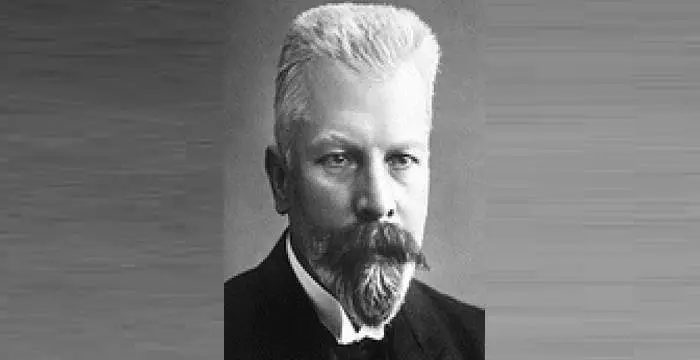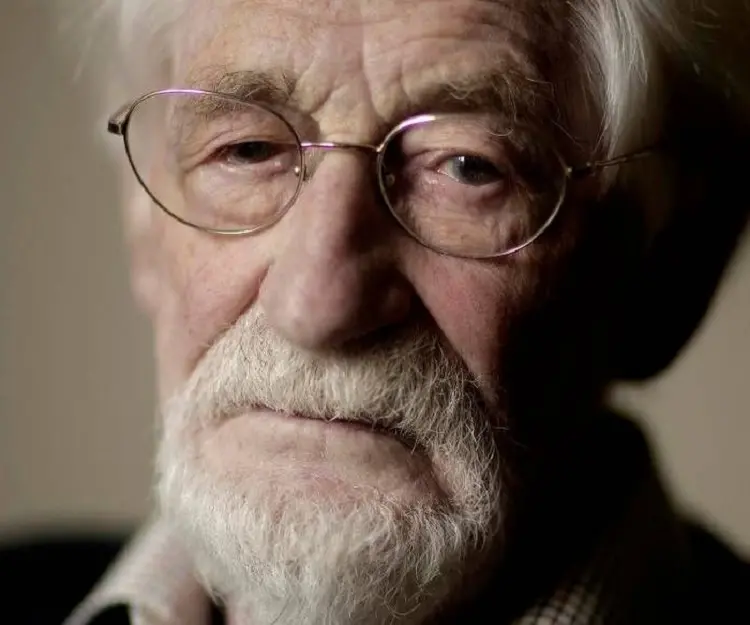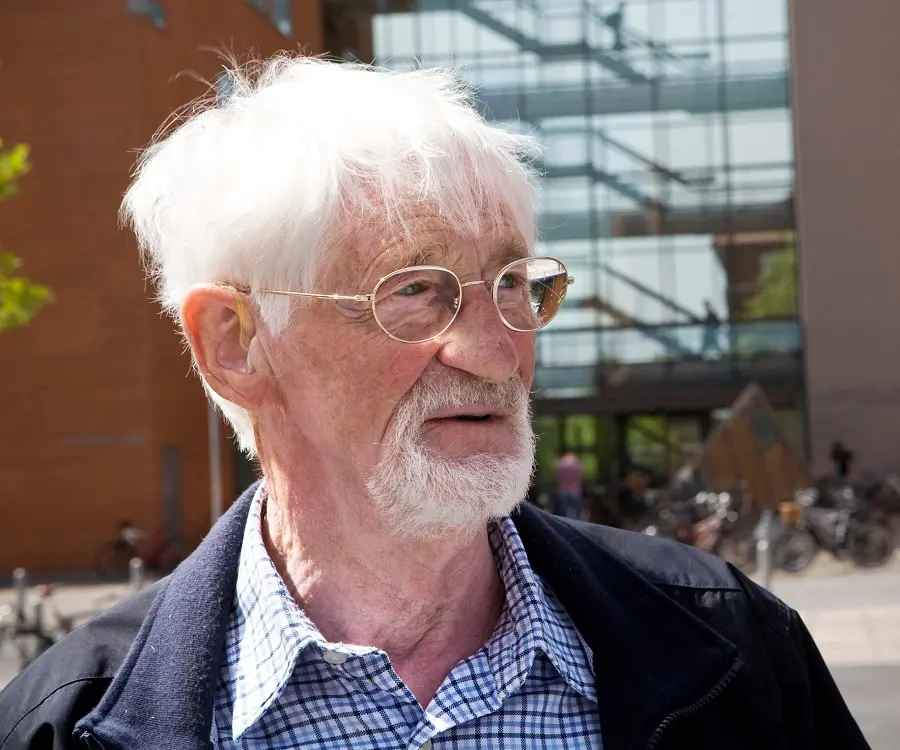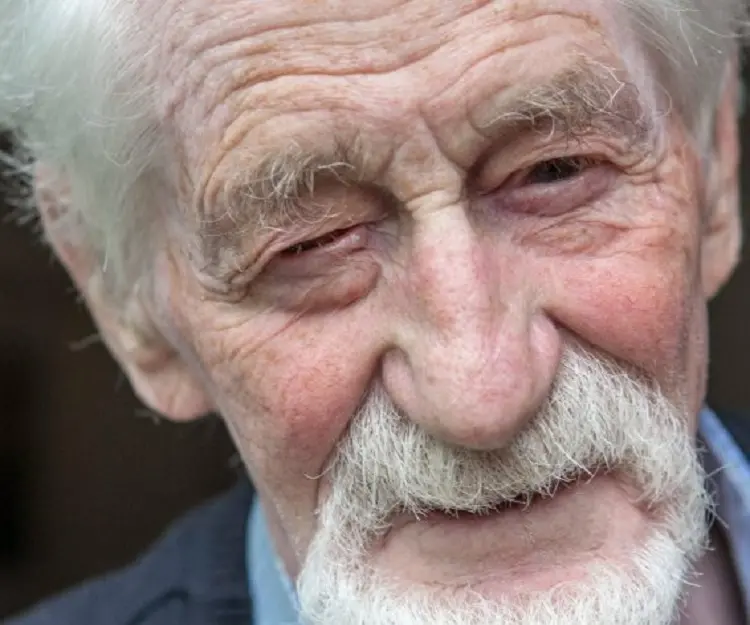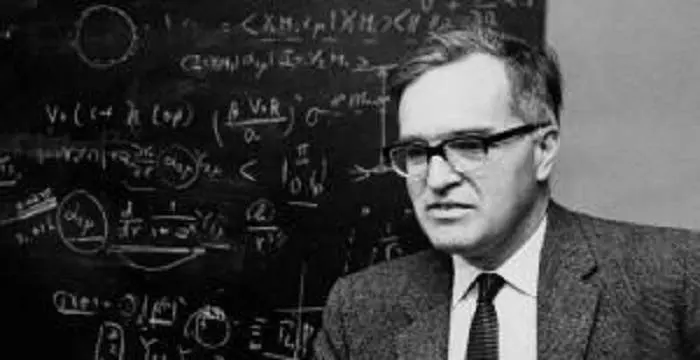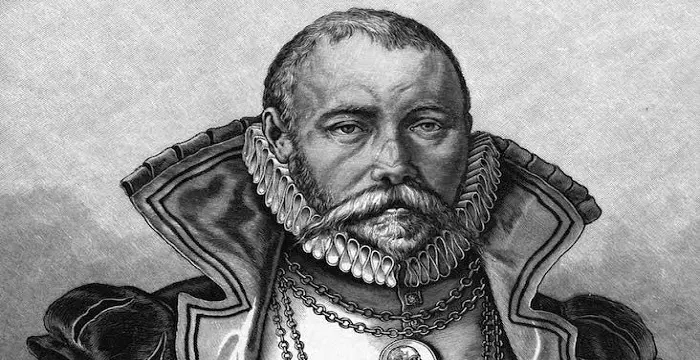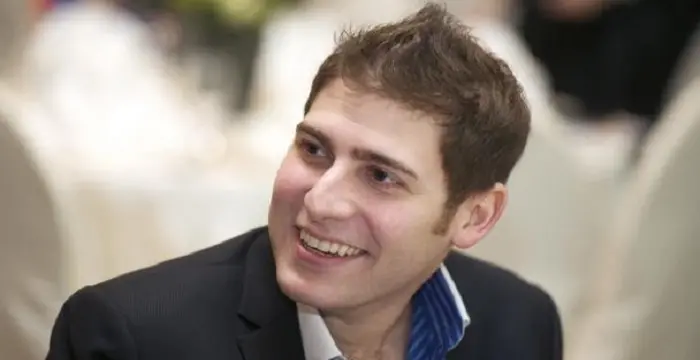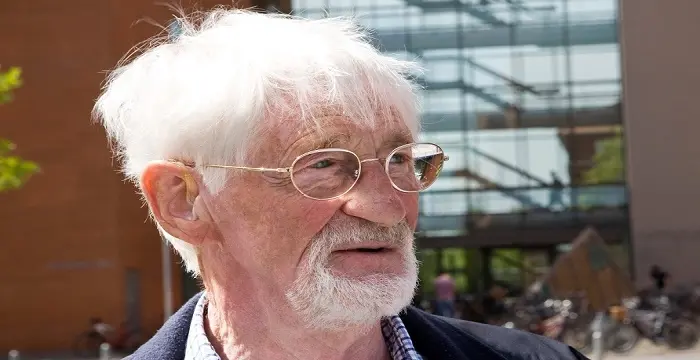
Jens C Skou - Nobel Laureate in Chemistry, Birthday and Personal Life
Jens C Skou's Personal Details
Jens Christian Skou is a Danish scientist and doctor who won the 1997 Nobel Prize in Chemistry
| Information | Detail |
|---|---|
| Birthday | October 8, 1918 |
| Nationality | Danish |
| Famous | Scientists, Chemists, Danish Men, Nobel Laureate in Chemistry |
| Known as | Jens Christian Skou |
| Birth Place | Lemvig, Denmark |
| Gender | Male |
| Father | Magnus Martinus Skou |
| Mother | Ane-Margrethe Skou |
| Sun Sign | Libra |
| Born in | Lemvig, Denmark |
| Famous as | Nobel Laureate in Chemistry |
// Famous Nobel Laureate in Chemistry
Eduard Buchner
Eduard Buchner was a German chemist and a zymologist who won the 1907 Nobel Prize in Chemistry. Check out this biography to know about his childhood, life, achievements, works & timeline.
Jens C Skou's photo
Who is Jens C Skou?
Jens Christian Skou is a Danish scientist and medical doctor who is credited for the discovery of an ion-transporting enzyme, sodium potassium activated adenosine triphosphate (Na+ K+-ATPase). The discovery earned him a Nobel Prize in Chemistry in 1997, half of which he shared with Paul Boyer and John E Walker. A student of medicine, Skou’s interest in research grew while he was investigating the active mechanism of local anaesthetic drugs. In the late 1950s he discovered the fact that nerve cell membranes of crabs contain an enzyme, sodium potassium ATPase, which in the form of the sodium potassium pump helps to maintain the salt balance between the cells and the tissue fluid by pumping sodium ions out of the cells and potassium ions into the cells. This, in turn, helped in maintaining a high intracellular concentration of potassium and a low concentration of sodium relative to the surrounding external environment. His work also led to the discovery of similar ATPase-based enzymes, including the ion pump that controls muscle contraction. Apart from carrying out research work, Skou also held important academic positions.
// Famous Danish Men
Benjamin Lasnier
Check out all that you wanted to know about Benjamin Lasnier, the famous singer & social media star; his birthday, his family and personal life, his girlfriends, fun trivia facts and more.
Aage Bohr
Aage Niels Bohr was a Nobel Prize winning nuclear physicist. This biography profiles his childhood, life, research career, achievements and timeline.
Tycho Brahe
Tycho Brahe was a Danish nobleman who made important contributions to astronomy. Check out this biography to know about his childhood, family life, achievements and interesting facts about him.
Childhood & Early Life
Jens Christian Skou was born on October 8, 1918, in Lemvig Denmark into a prosperous, wealthy family. His father, Magnus Martinus Skou, was a timber and coal merchant and his mother, Ane Margrethe Skou, was a homemaker. Young Skou was the oldest of the four children the couple had.
Tragedy struck the Skous’ early in life when senior Skou died of pneumonia. Jens was only 12 then. However, the early loss did not disrupt the family’s economical and financial status, as his uncle took great care of the business along with his mother as a passive partner.
When Jens Skou turned 15, he was enrolled at a boarding school in Haslev, Zealand, since there was no gymnasium or high school in Lemvig. While at the gymnasium, Skou found himself attracted to science and mathematics. In 1937, he appeared for the final examination.
Having completed high school, Skou decided to take up medicine after much consideration. He entered the University of Copenhagen in 1937. After seven years of studying, Skou graduated with a medical degree in 1944.
Career
Having completed his graduation, Jens Skou did his internship in a hospital in Hjørring for two years. While the first six months were spent practicing in a medical ward, during the latter half, he served in the surgical section. Towards the end, he started conducting smaller operations. While serving in the surgical ward, Skou became interested in local anaesthetics and decided to use it as a subject for thesis.
He temporarily served at the Orthopaedic Hospital in Aarhus before terminating his clinical training in 1947 and taking up a position at the Institute for Medical Physiology at Aarhus University under Professor Soren L Orksov. It was while at the university that he worked to finish his doctoral thesis on the anaesthetic and toxic mechanism of action of local anaesthetics.
Apart from working at the Institute of Physiology and writing his doctoral thesis, Skou took up an extra job as a doctor on call one night a week in 1949. This fulfilled his wish of serving as a medical doctor. While serving as a doctor, Skou became a social democrat from a political conservative and realized the need and importance of free education and free medical care in the society.
In 1957, he published his thesis. Written up in six papers, his work on local anaesthetics made him aware of the identification of the sodium-potassium pump, which is responsible for the active transport of sodium and potassium across the cell membrane. From then on, his scientific interest shifted from the effect of local anaesthetics to active transport of cations.
Skou had discovered the fact that a substance’s anaesthetic action was related to its ability to dissolve in a layer of the lipid part of the plasma membrane. He was aware that the anaesthetic molecules affected the opening of sodium channels which he assumed to be protein. He believed that this affected the movement of sodium ions, making the nerve cells inexcitable, thus causing anaesthesia.
Skou believed that the other types of membrane protein would also be affected by local anaesthetics dissolving in the lipid part of the membrane. He therefore had the idea of looking at an enzyme which was embedded in the membrane and finding out if its properties were affected by local anaesthetics. He looked at ATPase in crab nerves. Though the enzyme was there, its activity was highly variable.
While experimenting, Skou discovered the fact that ATPase was most active when exposed to the right combination of sodium, potassium and magnesium ions. This discovery made him realize that the enzyme had a connection with the active movement of sodium and potassium across the plasma membrane. Though Skou published his findings, he omitted the term ‘sodium-potassium pump’ from his paper, cautious of identifying the enzyme with the active ion movement.
It was while attending a conference in Vienna in 1958 that Skou first met Robert Post. Post had discovered the fact that three sodium ions were pumped out of the cell for every two potassium ions pumped in. Through his research, he had made use of a substance called ouabain to inhibit the pump. When Skou became aware of the fact, he soon realized the establishment of a link between the enzyme and the sodium-potassium pump.
In 1963, Skou became the chairman of the Institute of Physiology at Aarhus University and served in this position until 1978. Meanwhile, in 1977, Skou was appointed as a professor of biophysics. He retired from the Aarhus University in 1988. Though he gave up on systematic experimental work, he continued to work on kinetic models for the overall reaction of the pump on computer. Till date, he has kept his offices at the Department of Physiology.
Major Works
Skou’s most important contribution in the field of biochemistry came during the late 1950s. As a result of his experimentation and research, he proposed that an enzyme is responsible for the transport of molecules through a cell’s membrane. He discovered that the nerve cell membranes of crabs contain an enzyme, sodium potassium ATPase, which in the form of the sodium potassium pump helps to maintain the salt balance between the cells and the tissue fluid by pumping sodium ions out of the cells and potassium ions into the cells. This, in turn, helps in maintaining a high intracellular concentration of potassium and a low concentration of sodium relative to the surrounding external environment.
Awards & Achievements
Skou was awarded the prestigious Nobel Prize in Chemistry in 1997 for his discovery of Na+K+-ATPase. He shared the other half of the prize with Paul D. Boyer and John E. Walker.
Personal Life & Legacy
While training in Hjørring, Skou befriended a medical probationer, Ellen Margrethe Nielsen. The two shared a great rapport. When Neilson completed her graduation in nursing, she moved to Aarhus where the two married in 1948. The couple was blessed with a daughter in 1950, who died a year and a half later. In 1952 and 1954, they were blessed yet again with two more daughters.
// Famous Chemists
Henry Cavendish
Henry Cavendish was a theoretical chemist and physicist, renowned for discovery of hydrogen and calculation of the mass of earth. To know more about his childhood, profile, timeline and career read on
Walter Kohn
Nobel Laureate Walter Kohn was an Austrian-born American theoretical chemist and physicist. Check out this biography to know about his childhood, life, achievements, works & timeline.
Jabir Ibn Hayyan
Jabir Ibn Hayyan was a medieval era polymath. Check out this biography to know about his life, works and achievements.
Jens C Skou's awards
| Year | Name | Award |
|---|---|---|
Other | ||
| 0 | Nobel Prize in Chemistry | |
Jens C Skou biography timelines
- // 8th Oct 1918Jens Christian Skou was born on October 8, 1918, in Lemvig Denmark into a prosperous, wealthy family. His father, Magnus Martinus Skou, was a timber and coal merchant and his mother, Ane Margrethe Skou, was a homemaker. Young Skou was the oldest of the four children the couple had.
- // 1937When Jens Skou turned 15, he was enrolled at a boarding school in Haslev, Zealand, since there was no gymnasium or high school in Lemvig. While at the gymnasium, Skou found himself attracted to science and mathematics. In 1937, he appeared for the final examination.
- // 1937 To 1944Having completed high school, Skou decided to take up medicine after much consideration. He entered the University of Copenhagen in 1937. After seven years of studying, Skou graduated with a medical degree in 1944.
- // 1947He temporarily served at the Orthopaedic Hospital in Aarhus before terminating his clinical training in 1947 and taking up a position at the Institute for Medical Physiology at Aarhus University under Professor Soren L Orksov. It was while at the university that he worked to finish his doctoral thesis on the anaesthetic and toxic mechanism of action of local anaesthetics.
- // 1949Apart from working at the Institute of Physiology and writing his doctoral thesis, Skou took up an extra job as a doctor on call one night a week in 1949. This fulfilled his wish of serving as a medical doctor. While serving as a doctor, Skou became a social democrat from a political conservative and realized the need and importance of free education and free medical care in the society.
- // 1957In 1957, he published his thesis. Written up in six papers, his work on local anaesthetics made him aware of the identification of the sodium-potassium pump, which is responsible for the active transport of sodium and potassium across the cell membrane. From then on, his scientific interest shifted from the effect of local anaesthetics to active transport of cations.
- // 1958It was while attending a conference in Vienna in 1958 that Skou first met Robert Post. Post had discovered the fact that three sodium ions were pumped out of the cell for every two potassium ions pumped in. Through his research, he had made use of a substance called ouabain to inhibit the pump. When Skou became aware of the fact, he soon realized the establishment of a link between the enzyme and the sodium-potassium pump.
- // 1997Skou was awarded the prestigious Nobel Prize in Chemistry in 1997 for his discovery of Na+K+-ATPase. He shared the other half of the prize with Paul D. Boyer and John E. Walker.
// Famous Scientists
Juliane Koepcke
Juliane Koepcke is a German-Peruvian biologist, who was the lone survivor among the 92 passengers and crew of the ill-fated LANSA Flight 508 that crashed in the Peruvian rainforest on 24 December 1971. Know more about her life in this biography.
Henry Cavendish
Henry Cavendish was a theoretical chemist and physicist, renowned for discovery of hydrogen and calculation of the mass of earth. To know more about his childhood, profile, timeline and career read on
Konstantin Tsiolkovsky
Konstantin Tsiolkovsky was a Russian rocket scientist and a pioneer of astronautics. This biography provides detailed information about his childhood, family, personal life, career, achievements, etc.
Gabe Newell
Gabe Newell is an American computer programmer and businessman, best known as the co-founder of ‘Valve Corporation.’ This biography provides detailed information about his childhood, family, personal life, career, etc.
Grigori Perelman
Grigori Perelman is a Russian mathematician who is best known for his contributions to Riemannian geometry and geometric topology. Check out this biography to know about his childhood, family life, achievements and fun facts about him.
Eduardo Saverin
Eduardo Luiz Saverin is a Brazilian internet entrepreneur and investor. This biography profiles his childhood, life, career, achievements, and timeline
Jens C Skou's FAQ
What is Jens C Skou birthday?
Jens C Skou was born at 1918-10-08
Where is Jens C Skou's birth place?
Jens C Skou was born in Lemvig, Denmark
What is Jens C Skou nationalities?
Jens C Skou's nationalities is Danish
Who is Jens C Skou's father?
Jens C Skou's father is Magnus Martinus Skou
Who is Jens C Skou's mother?
Jens C Skou's mother is Ane-Margrethe Skou
What is Jens C Skou's sun sign?
Jens C Skou is Libra
How famous is Jens C Skou?
Jens C Skou is famouse as Nobel Laureate in Chemistry
